I WANT TO STUDY IN KINESIOLOGY
The Bachelor of Kinesiology program aims to train students to assess the physical capacity of a variety of clientele, to analyze human movement and to prescribe physical activity programs adapted for prevention, treatment or performance purposes. Undergraduate university training in kinesiology includes theoretical and practical courses as well as internships.
In Quebec, 10 universities offer the Bachelor of Kinesiology program:
- Université de Montréal
- Université Laval
- Université du Québec à Montréal
- Université de Sherbrooke
- Université McGill
- Université Concordia
- Université du Québec à Trois-Rivières
- Université du Québec à Chicoutimi
- Université du Québec à Rimouski
- Université du Québec en Outaouais
The bachelor's degree in kinesiology allows direct access to the job market or to pursue studies at the graduate or postgraduate levels. provided by many universities in Quebec.
Stats, Salaries and Outlook
Kinesiologists' salary profile 2023 (In French)
View here the placement statistics in kinesiology (In French)
View here a market study in kinesiology (In French)
The profession of kinesiologist, by Job Bank Canada
WHY STUDY IN KINESIOLOGY?
Watch the following videos:
An interview with Nathalie Séguin kinesiologist and physical trainer, former athlete at the Rouge & Or athletics, coach of provincial goalball teams and owner of a training center in Quebec and conducted by Laval University;
An interview with Josée Bélanger, a forward at Vert et Or Soccer and a student in kinesiology at the Université de Sherbrooke, conducted by the Université de Sherbrooke;
An interview with Claudie-Anne Morin, kinesiologist in health at work at Revenu Québec, conducted by Université Laval;
An interview with Jean-François Sylvain, kinesiologist and coordinator of the kinesiology department at the Georges-Morisset Health Center in Quebec City and conducted by Université Laval;
An interview with Gabriel Hardy, kinesiologist in sports performance, former coach of the Quebec Remparts and owner of Hardygym in Quebec, conducted by Laval University;
An interview with Patrick Maranda, kinesiologist specialized in cardiac and pulmonary rehabilitation at the University Institute of Cardiology and pulmonology of Quebec and conducted by Université Laval;
An interview with Sonia Paquet-Martel,kinesiologist at the Quebec Rehabilitation Clinic in Lévis and conducted by Université Laval;
An interview with Josianne Corriveau, kinesiologist and master's student in the field of physical activity at the University Sherbrooke (specialization in neuromechanics and ergonomics) and conducted by the Université de Sherbrooke;
An interview with Mélisa Audet, kinesiologist and master's student in the field of physical activity (specialization in kinesiology, health and aging) at the Université de Sherbrooke, conducted by the Université de Sherbrooke;
An interview with Baptiste Fournier, a doctoral student in the field of physical activity sciences at the Université de Montréal and conducted by the Fonds de recherche du Québec.





